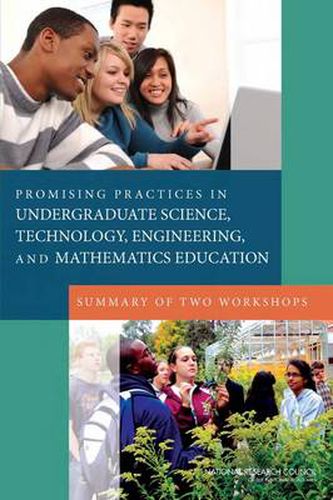Readings Newsletter
Become a Readings Member to make your shopping experience even easier.
Sign in or sign up for free!
You’re not far away from qualifying for FREE standard shipping within Australia
You’ve qualified for FREE standard shipping within Australia
The cart is loading…






Numerous teaching, learning, assessment, and institutional innovations in undergraduate science, technology, engineering, and mathematics (STEM) education have emerged in the past decade. Because virtually all of these innovations have been developed independently of one another, their goals and purposes vary widely. Some focus on making science accessible and meaningful to the vast majority of students who will not pursue STEM majors or careers; others aim to increase the diversity of students who enroll and succeed in STEM courses and programs; still other efforts focus on reforming the overall curriculum in specific disciplines. In addition to this variation in focus, these innovations have been implemented at scales that range from individual classrooms to entire departments or institutions. By 2008, partly because of this wide variability, it was apparent that little was known about the feasibility of replicating individual innovations or about their potential for broader impact beyond the specific contexts in which they were created. The research base on innovations in undergraduate STEM education was expanding rapidly, but the process of synthesizing that knowledge base had not yet begun. If future investments were to be informed by the past, then the field clearly needed a retrospective look at the ways in which earlier innovations had influenced undergraduate STEM education. To address this need, the National Research Council (NRC) convened two public workshops to examine the impact and effectiveness of selected STEM undergraduate education innovations. This volume summarizes the workshops, which addressed such topics as the link between learning goals and evidence; promising practices at the individual faculty and institutional levels; classroom-based promising practices; and professional development for graduate students, new faculty, and veteran faculty. The workshops concluded with a broader examination of the barriers and opportunities associated with systemic change.–
$9.00 standard shipping within Australia
FREE standard shipping within Australia for orders over $100.00
Express & International shipping calculated at checkout
Numerous teaching, learning, assessment, and institutional innovations in undergraduate science, technology, engineering, and mathematics (STEM) education have emerged in the past decade. Because virtually all of these innovations have been developed independently of one another, their goals and purposes vary widely. Some focus on making science accessible and meaningful to the vast majority of students who will not pursue STEM majors or careers; others aim to increase the diversity of students who enroll and succeed in STEM courses and programs; still other efforts focus on reforming the overall curriculum in specific disciplines. In addition to this variation in focus, these innovations have been implemented at scales that range from individual classrooms to entire departments or institutions. By 2008, partly because of this wide variability, it was apparent that little was known about the feasibility of replicating individual innovations or about their potential for broader impact beyond the specific contexts in which they were created. The research base on innovations in undergraduate STEM education was expanding rapidly, but the process of synthesizing that knowledge base had not yet begun. If future investments were to be informed by the past, then the field clearly needed a retrospective look at the ways in which earlier innovations had influenced undergraduate STEM education. To address this need, the National Research Council (NRC) convened two public workshops to examine the impact and effectiveness of selected STEM undergraduate education innovations. This volume summarizes the workshops, which addressed such topics as the link between learning goals and evidence; promising practices at the individual faculty and institutional levels; classroom-based promising practices; and professional development for graduate students, new faculty, and veteran faculty. The workshops concluded with a broader examination of the barriers and opportunities associated with systemic change.–